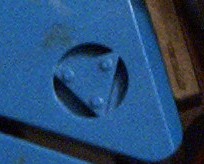Renderosity Forums / Carrara
Welcome to the Carrara Forum
Forum Coordinators: Kalypso
Carrara F.A.Q (Last Updated: 2025 Jan 20 11:31 am)
Visit the Carrara Gallery here.
Subject: Vertex Modeler Problems
When inside the Vertex Modeling room..... Select ALL... Hold CTRL and ALT at the same time..... Click on a vertex of the Object which you wish to REMAIN intact. It willl LIGHT UP YELLOW when you have done this correctly. You will now have Boolean subtract available to you. Your next step is to write the guys at Eovaries a letter and blast them for having overlooked this in the manual, even though it was mentionned to them back when they worked for Metacretons 5 years ago. Is there some reason you cannot use a bump-map to accomplish what you are doing ? to what level is your camera going to be viewing this object. (just a thought) good luck
Awesome!! That works!! Thank you both so much. That was very, VERY frustrating. What's worse is that since this is only my second week with C2 I don't know if it's me screwing up or the program. I'll have to drop Eovia a line. My list of issues keeps on getting longer. "Is there some reason you cannot use a bump-map to accomplish what you are doing ?" Carrara 2.0 was a recent upgrade/purchase, so I am trying to use this a simple test project to learn how the modeling tools work. Or at least, I THOUGHT it was going to be simple!! :D Also, I am not fluent enough yet to go about making a bump map. I understand what a bump map is and how to apply one to an object, but not necessarily how to make one. I think the steps are: 1) Export the object as an OBJ 2) Use UV Mapper to create a template 3) Paint the bump map with a 2D paint program 4) Apply the bump map to the object. If this is accurate, I need a 2D paint program and all I have right now is the Paint program that comes with Windows.
What I am attempting to do is to put a small indentation (an oval) in the side of the object. This indentation is not very deep and does not go through the entire object. I don't really know why, but I thought that I'd be able to move the drawing plane to a specific surface and then draw additional vertex points/poly lines directly on the surface of the object. That is apparently NOT the case. I can add vertex points only along an edge.>>>>>>> You could have just linked a few vertices, and then drew your points on and then link all vertices into the center of the shape and then pulled that vertice in. Understand? If you don't how litst's face tutorial the section that discusses the make of the eye socket is a good example. Brian
Privacy Notice
This site uses cookies to deliver the best experience. Our own cookies make user accounts and other features possible. Third-party cookies are used to display relevant ads and to analyze how Renderosity is used. By using our site, you acknowledge that you have read and understood our Terms of Service, including our Cookie Policy and our Privacy Policy.




UGGGHHH! I am extremely frustrated with the Vertex Modeler. I have read Chapter 9 of the Carrara 2 manual (covering the vertex modeler) three times now and I just don't get it.I have an object that I originally modeled with the spline modeler (which is rather simple to use). I then converted it to the Vertex modeler so that I could do "detail" work on the object.
What I am attempting to do is to put a small indentation (an oval) in the side of the object. This indentation is not very deep and does not go through the entire object.
I don't really know why, but I thought that I'd be able to move the drawing plane to a specific surface and then draw additional vertex points/poly lines directly on the surface of the object. That is apparently NOT the case. I can add vertex points only along an edge.
My next thought was to create an oval, extrude it, move it to the correct position and use Boolean Subtraction. Create and extruding the oval was fairly simple. I had a very difficult time aligning the extruded oval with the surface of my object. Where are the alignment tools?!?
Finally, I positioned the extruded oval where I wanted it. But no matter what I do the Boolean Subtraction menu item is never lit. I have been able to get Union and Intersection to show up though. There is nothing in the one whole paragraph that explains why the Boolean Subtraction is not an option. There are no holes in either object. The are both closed objects. I don't see any difference between what I'm doing and what it shows on page 221 of the manual, except that the extruded oval does not pass entirely through the original object.
Just as a test, I thought perhaps Boolean subtraction only works if one object passes completely through the other object. I resized the oval to pass completely through the object and still no subtraction!
The vertex modeler seems to be much more difficult to work with then it should be. And the manual does not do nearly enough to explaing how it works. I suppose if you were already familiar with vertex modelers from other programs that wouldn't be a problem.
Can anyone help me figure this out? Maybe point me in the direction of a good tutorial? Or should I just forget it and buy a different modeling program (such as Rhino 3D) ?
Thanks,
Brian Wheatley